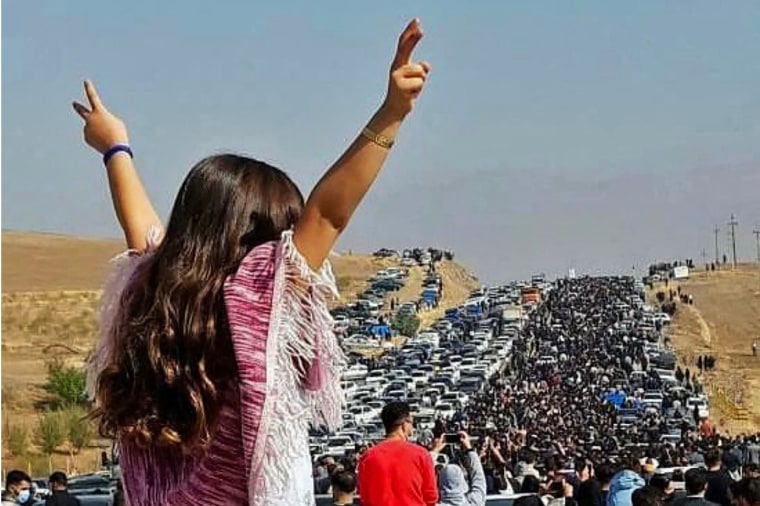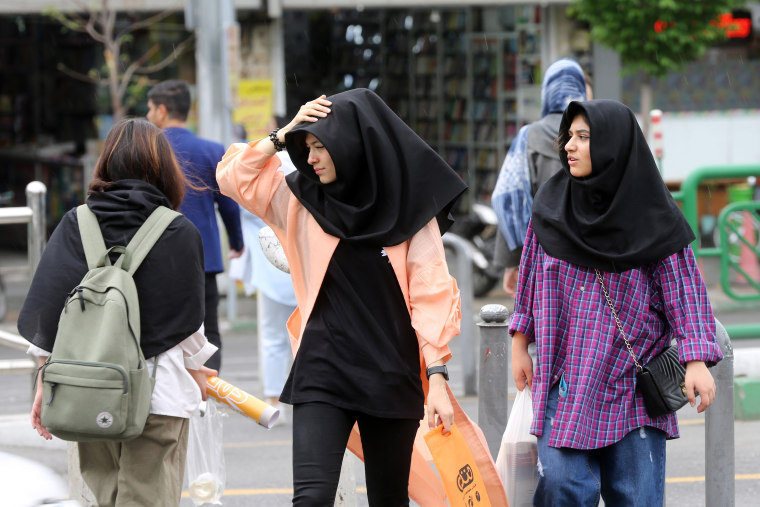Iran is trying to reimpose strict dress codes months after a wave of unrest in which women and girls removed their headscarves in protest following the death of a young woman who had been detained by morality police.
The government is trying to reassert control after months of the sometimes-violent nationwide demonstrations posed the biggest challenge to the clerical establishment since the 1979 Islamic Revolution.
Over the weekend, thousands of text messages were sent reminding business owners and drivers of the renewed crackdown on women not wearing hijabs, the head coverings worn by some Muslim women, according to the Iranian state broadcaster IRIB News.
Officials also announced that people who encourage women to remove their hijabs would be prosecuted.
“The crime of promoting unveiling will be dealt with in the criminal court whose decisions are final and unappealable,” Deputy Attorney General Ali Jamadi said Saturday, according to the semiofficial Mehr News Agency.
The chief commander of Iran's police forces, Ahmad-Reza Radan, recently announced a set of procedures that went into effect Saturday.
Stores where female employees do not wear head coverings will first get warnings and could face closing if the employees do not comply, he added.

After Mahsa Amini, 22, a Kurdish Iranian, died in a hospital Sept. 16 after she was detained and accused of breaking the laws governing dress, the hijab became a symbol of official repression, with women and girls defiantly removing their headscarves in public.
Force and mass arrests have largely quelled the unrest, and the government had spent a few months building up to its renewed emphasis on women's dress codes.
President Ebrahim Raisi underlined the importance of the dress code, in particular the headscarf, in a recent speech in Tehran.
The headscarf is a “religious necessity,” he said, according to a video the government's public affairs office posted on Twitter.
“Today, the issue of hijab is a legal matter, and all members of our society should adhere to the hijab, as they have been so far,” Raisi said at the event April 1.
The renewed emphasis on the hijab was announced April 8, with implementation beginning over the weekend.
Some Iranian women criticized the plans.
“This harsh and rude response will definitely either make things worse or will not lead anywhere,” Parinaz Mobarhan, a resident of Tehran, told the West Asia News Agency in video distributed by Reuters.
Another resident, Nasiri, who provided only one name, said: “The hijab is a voluntary matter. The person herself has to decide whether they want to have this scarf around them or not. I think forcing this will yield the opposite result.”

Among the most obvious rules governing the population's behavior were those based on the conservative establishment's interpretation of Islamic dress codes.
Morteza Aghatehrani, a hard-line member of Parliament, said that the hijab was “appointed by God” and that it was an old law that was in need of revision.
“The Parliament, government and judiciary are currently discussing this,” he told NBC News, adding that it “needs serious changes so it could be implemented.”
The hijab has been obligatory for all women in Iran since the early 1980s.
